Your landing page design has a significant influence on visitor behavior. Yet one of the key factors in determining how well your landing pages perform isn’t about design at all – it’s how strategically you use the relevant tech tools to optimize each visit.
Think about this: according to Marketo, 96% of visitors who come to your website are not yet ready to buy. They are learning, gathering information and deciding which companies they might do business with. Without the right tech in place, more than half of those visitors will likely leave without taking action.
Let’s look at five tech capabilities you can implement now to ensure your landing pages are optimized to move your visitors into the funnel.
Retargeting Pixels
Retargeting is the ability to track a landing page visitor’s online behavior and resurface your messaging accordingly in other digital spaces. This gives the viewer another opportunity to connect with your brand and possibly convert.
Marketers are getting savvy about creating landing pages that convert, but it’s far from fool-proof. Using retargeting pixels is a powerful way to retain these potential customers in your marketing funnel. And customers who are retargeted are 70% more likely to convert into paying customers than those who aren’t.
Facebook’s Pixel is a prime example of a retargeting tool used to recapture leads for their landing page:
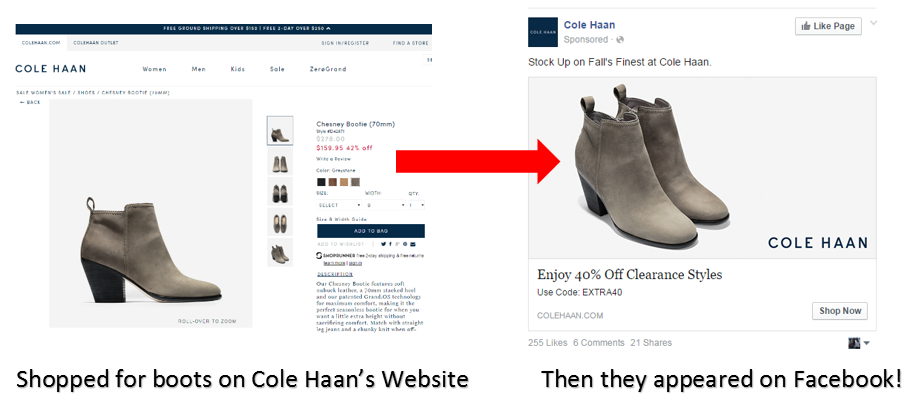
Source: WordStream
Facebook Pixel syncs and sends visitor tracking information to your Facebook Business account; simply copy and paste your Pixel ID to your landing page. Once you’ve installed the pixel, it immediately begins to collect data from your site visitors to build custom audience information that’s ready when you start your next Facebook ad campaign.
You can also employ retargeting in Google AdWords campaigns; let’s look at one campaign to this approach. When Sharpspring originally launched its dynamic landing page campaign, they used Google Ads as one of their main funnel feeders:

Source: Acquisio
After visiting the landing page, customers were retargeted for up to seven days; clicking on that ad would take them to this landing page:
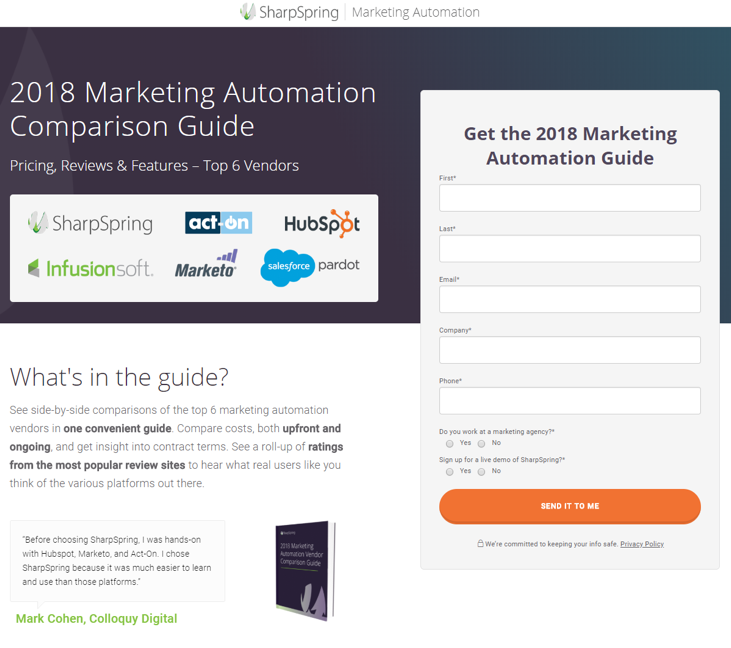
Source: Acquisio
If visitors took more than seven to 14 days to return to the landing page, they would see this landing page with a new call to action and more urgency:
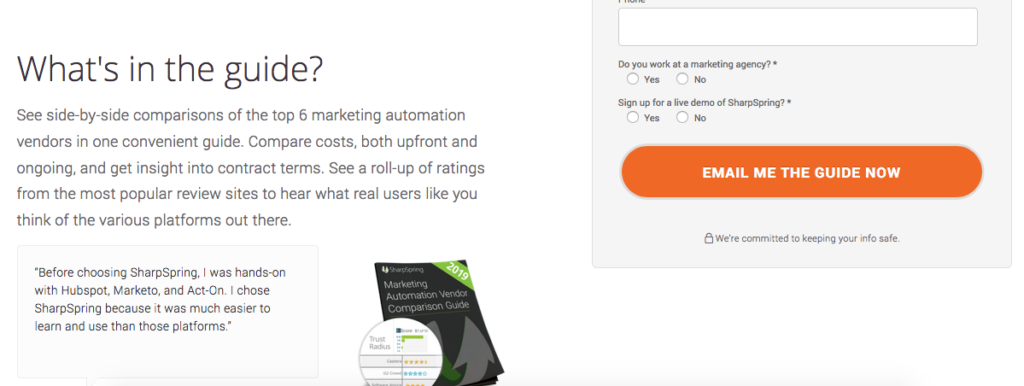
Source: Acquisio
This simple change allowed Sharpspring to increase conversion rates and clicks by levering their data to inform their PPC campaign.
Integrated Marketing Automation
Integrated marketing automation gives you the ability to connect and sync your marketing automation software with other programs across your stack, giving you the flexibility to create a comprehensive marketing campaign for your landing pages.
Integrated marketing automation can cut down the cost of paying for added features, the time it takes to switch between platforms, and the overwhelm of multiple reports.
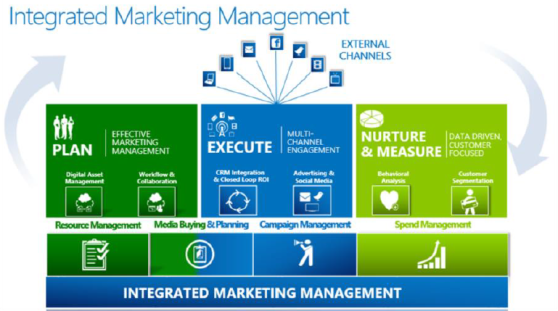
Source: Edgewater Technology
It allows you to leverage your customer relationship management (CRM) solution to help unlock the power of marketing automation for your landing page.
Here’s how it works: once you integrate marketing automation into your stack, your CRM will populate with new leads generated from this campaign so it can start off sales activities. Your accounting app will receive the details of converted leads, so they can send invoices. Your event management app will know of any leads that have signed up for upcoming events, and so on.
Mapping the customer experience to your multichannel strategies should be the first step in optimizing marketing automation. If you fail to inform or create a solid workflow, you lose leads along the way.
The next step is to add multi-channel platforms to your integrated marketing. Each channel plays a role in capturing leads as they enter, leave or return to your landing page. This means incorporating some of the following elements into your campaign:
- On-site chat
- Social media and search ads
- Landing pages
- Live video and webinars
- Email drips
One of the more robust integrated marketing automation tools to consider is Kajabi. It’s an all-in-one platform for building, publishing, marketing and selling information products that helps you easily build complex multi-channel funnels that are fully integrated from the get-go.
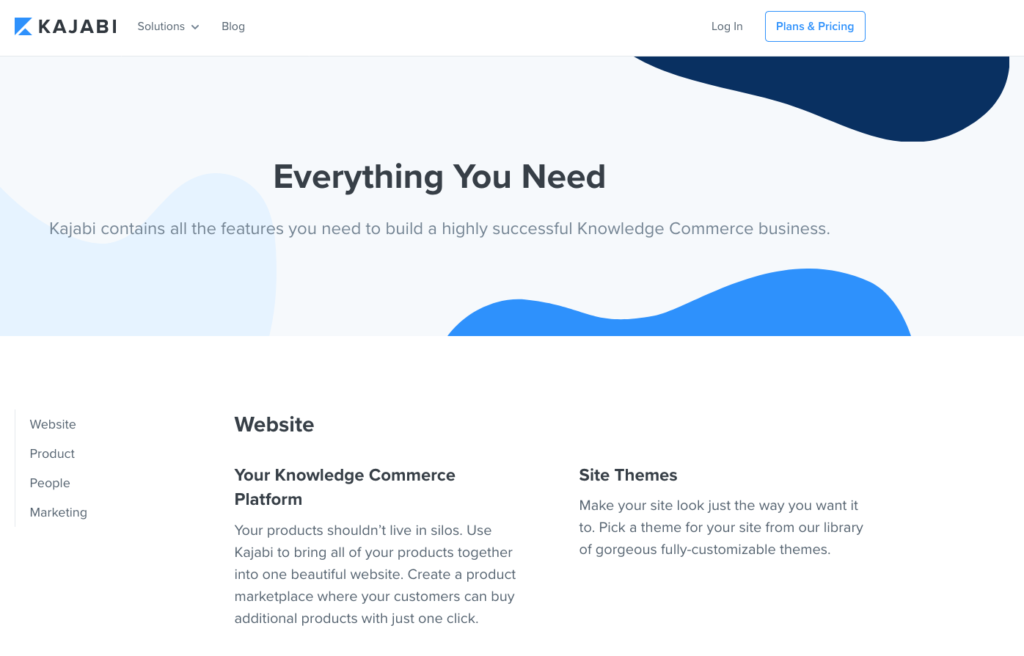
Source: Kajabi
Kajabi allows you to simultaneously create and manage your email marketing campaigns, membership portals, landing pages, webinars, video courses, contact management and more from one central dashboard.
This lets you get your campaign up and running sooner rather than trying to implement new tools for each channel into your stack.

Source: Kajabi
Kajabi’s powerful pipeline builder also allows you to easily create cross-channel sales funnels from libraries of existing “pipeline blueprint” templates.
Their easy drag-and-drop templates integrate with multiple programs, allowing you to build a comprehensive customer experience with triggers, (re)marketing and hyper-segmentation with a built-in CRM to manage it all – without the need for coding.
Dynamic Content Personalization
It’s the age of personalization online. Dynamic Yield found that marketers have a strong belief in the value of personalization, and brands agree. Globally, about 26% of marketers who responded to the survey said that personalization is at the core of their marketing and customer experience efforts; another 46% said they understand the benefits of personalization.
Thanks to available tech, dynamic content personalization (content that changes based on customer segmentation or data) can help even small brands meet the customer demand for personalization. The content delivered on your landing page dynamically changes to match variables such as location, preferences, purchase history, and even gender.
Using dynamic content personalization has many benefits, according to data from Evergage, including increased engaged, better experience and increased conversion rates:

Let’s look at one example: Bills.com took a creative approach and decided to use an interactive and personalized landing page. The page asks the viewer three questions before providing an offer. It starts with this one:

Which leads to a second question:
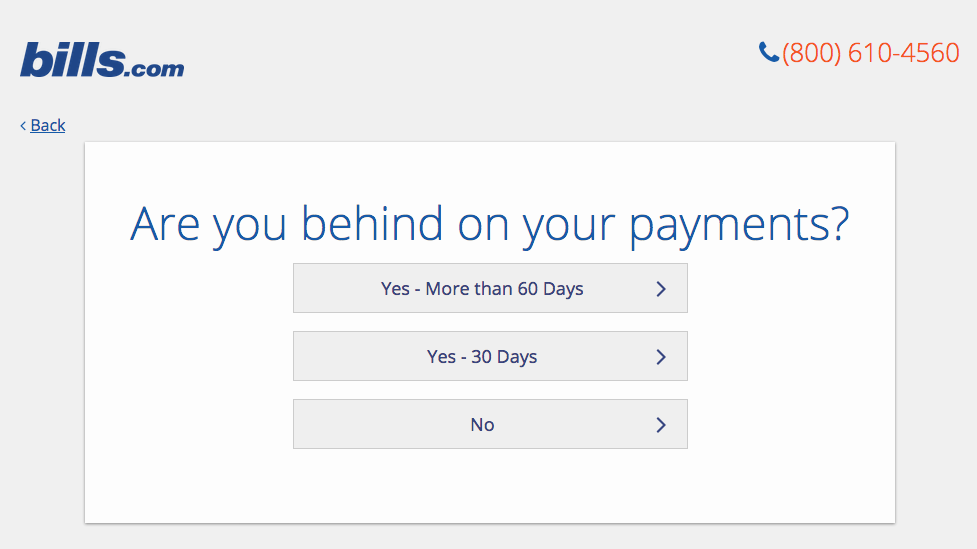
Then the final screen, where you fill out your information:
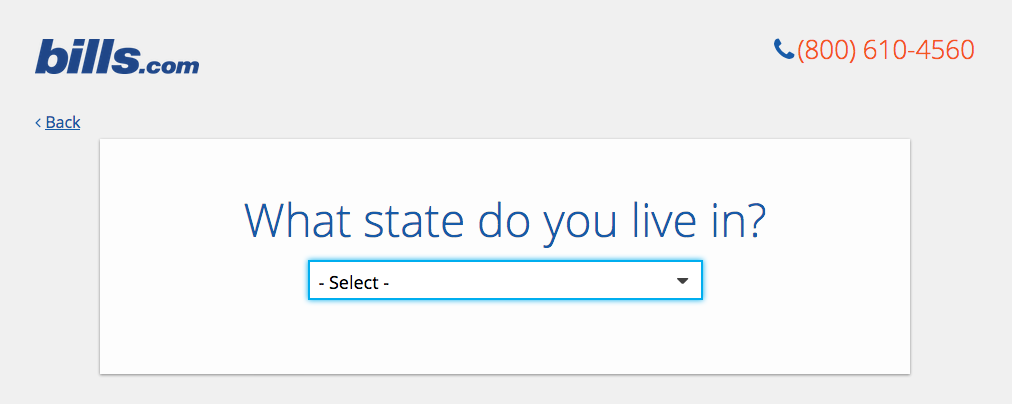
This data going into your CRM is highly valuable, giving you not only location but financial data on your lead so you can customize the marketing flow from there.
Advanced A/B Testing
In A/B testing, you use two or more variations of an element on your landing page (or use two entirely different pages) to see which variation produces the most conversions.
Simple A/B testing could test color, layout, CTA, copy, image; more sophisticated testing can test other variables as well.
Device segmentation is something you may want to consider when A/B testing your landing page. On average, people spend 6 hours and 42 minutes online each day, with social media usage making up the bulk of those hours. Mobile usage continues to go up, with more than 4.68 billion users as of January 2019, an increase of approximately 100 million from 2018.
To optimize your landing page for desktop and mobile, you’ll want to do device-segmented A/B testing, to determine if different elements convert differently depending on the device.
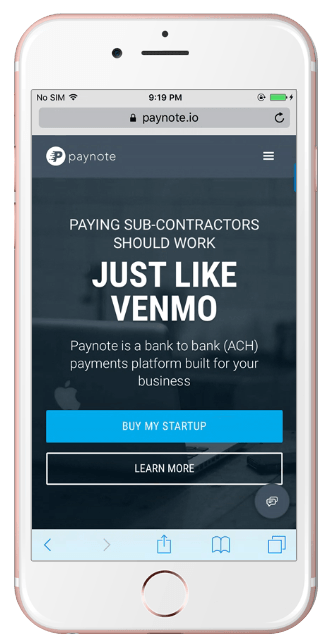
Source: Instapage
You may also want to consider AI-enhanced testing. Standard A/B testing typically results in about 10-20% of tests finding improved performance, whereas AI testing relies on its machine learning capabilities to make informed decisions about what landing page to offer, mimicking the human ability to get better with time.
AI for your landing page can enhance your A/B testing to improve results with hyper-focused or segmented data. Plus, AI in testing can use multivariate testing (incorporating several changes in one variant) faster than human-managed testing.
Let’s look at one case study on how effective using advanced A/B testing tech can help to make simple improvements for better results. Orange, a major telecommunications company, needed help increase engagement on its low-performing page landing page.
With AB Tasty, they started from scratch with two new landing page proposals, both with better functionality and a more concise design than the original. Within days of testing with A/B Tasty, Orange realized that changing the main CTA copy from Submit to Take Advantage of Free Offer, would improve results, along with a rework to the introduction of the ‘terms and conditions’ text.

Source: AB Tasty
After these changes, they saw an increased click-through rate (CTR) by 26% when compared to the original landing page that Orange had created without AB Tasty.
Optimize with Visual Data Reports
Visual data reporting, as defined by SAS Insights, is the presentation of data in a pictorial or graphical format. Visual data reporting allows the reader to grasp data, behavior, and actions, whereas traditional text-based data reports make it difficult to identify patterns or conceptualize behavior.
For your landing page, visual data reporting can help you see what elements of your site your visitors are gravitating to. This can help you identify any barriers keeping people from converting.
HubSpot used visual data reporting provided by Hotjar to help improve their landing page and website performance, especially in their HubSpot Academy learning portal.
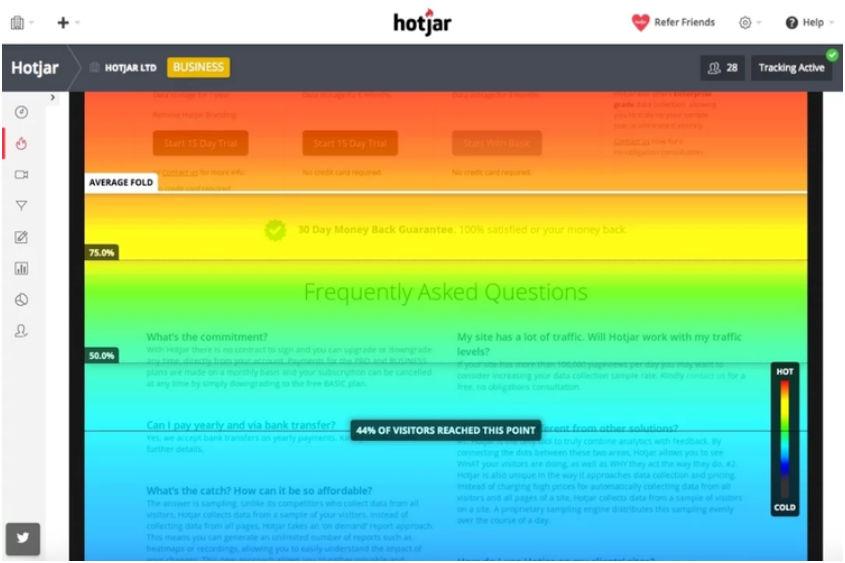
Source: HotJar Visual Data
Using a heatmap, they discovered people were bouncing out of the Academy landing page when they were asked to use a work email to subscribe; that was a problem because most of most their audience were students or job seekers.
A poll revealed friction on the page they could have never considered. With a simple fix of sign up form, they saw a 10% increase in sign-ups and class attendance.
Conclusion
Landing page optimization has come a long way, thanks to new technology that leverages user data and behavior.
With the right technology and tools, you can identify problem areas, personalize the content experience, create a fully integrated cross-channel marketing flow, and optimize your landing pages for ultimate conversion.


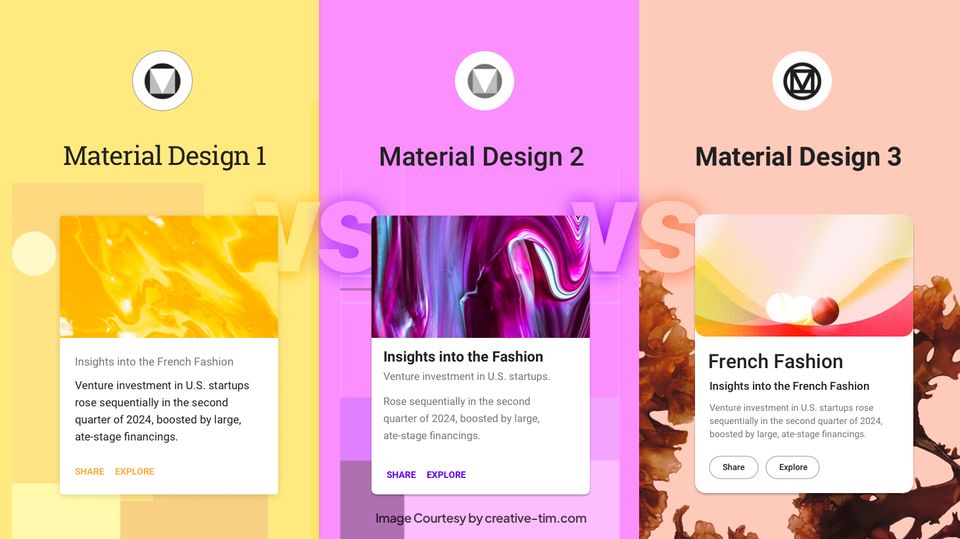
![15+ Top Black Friday & Cyber Monday Deals for Developers and Designers [2023]](/blog/content/images/size/w960/2021/11/black-friday-deals-developers-1.jpg)
